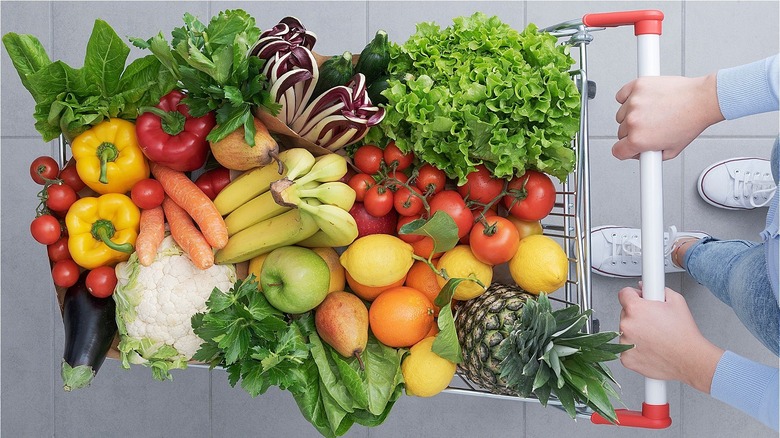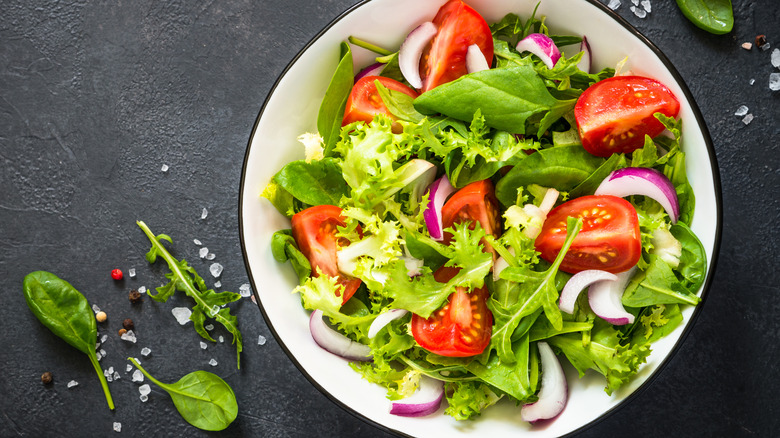Here's Why These Produce Items Could Skyrocket In Price This Winter
If you love iced tea, you're probably jumping for joy that the AriZona Iced Tea Cans haven't seen a raise in prices (yet) throughout inflation. While it's refreshing to still be able to grab a can of your favorite flavor for 99 cents, unfortunately, it seems the (less than a) buck stops there.
With inflation skyrocketing to 8.6% over the course of one year – the biggest year-to-year increase in 40 years – the price of food has significantly impacted the wallets of Americans across the country (via U.S. Bureau of Labor Statistics). Because of this, people are facing hard decisions when it comes to how they spend their money, with some families being forced to make penny-pinching actions by limiting electricity use and driving less in order to afford to put food on the table every evening (via Sky News).
While the price of food has increased overall, some items have been affected more than others. Even if you've buckled down and sifted out all the fun extra food items, you'll still find that the mere basics of eggs and produce have carried a heftier price tag due to additional environmental and supply-chain factors. Depending on where certain items are grown and produced, the environment ultimately decides the yield amounts for that given season.
A grave winter for popular produce items
While Salinas, California is known as the "salad bowl of the world," this year looks more like a wilted, dry bowl of sadness. California is facing one of its most serious droughts in recorded history. The Golden State is currently undergoing a severe lack of rain and snow, while the Colorado River continues to be restricted to the southernmost part of the state. Add that to the recent turmoil effects of Hurricane Ian in Florida and the produce supply chain continues to be weakened. As a result, tomatoes, onions, and leafy greens — usually grown and harvested during the winter — are threatened.
This harsh domino effect will impact the price of these produce items at your local grocery store. "There's just not enough water to grow everything that we normally grow," said Don Cameron, President of the California State Board of Food and Agriculture (per Reuters). With the prices of these items inevitably increasing, we might not even see usual stockpiles either. With California as the top supplier, doling out more than 90% of the tomato used for canned tomatoes in the United States and 30% for the world (via The Washington Post), we now see fewer headed out grocery stores and in canning manufacturing facilities due to the lessened supply. And when you do see them on the shelves, prepare to dish out more money for them.

